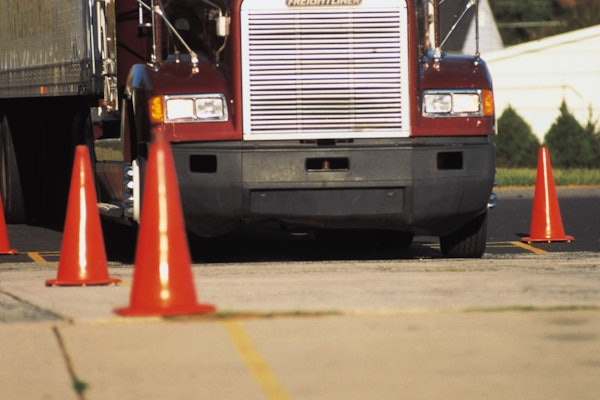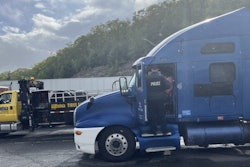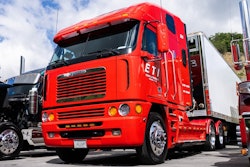What’s the sweet spot for the number of trucks in an owner-operator’s fleet?
What’s the sweet spot for the number of trucks in an owner-operator’s fleet? It’s hard to pin down. It varies with the owner’s business skills, among other factors. But somewhere between four and 10 trucks, the typical owner-operator starts earning quite a bit more than he did with one truck. He’s also going to be driving less, if not staying off the road altogether.
The Overdrive 2005 Owner-Operator Market Behavior Report shows that revenue and operating income take a big jump when an operator-owned fleet goes beyond three trucks. But making a successful transition to a multi-truck operation takes business savvy.
“As you go past one to two, three, four trucks, it’s harder to manage the business,” says Chris Brady, whose Commercial Motor Vehicle Consulting compiles the Overdrive report. “You have to manage drivers. You have to keep more than one truck filled.”
Some do not survive growth to three or four trucks. Those that do have to develop business skills that enable them to get a better rate of return on their investment. And they often find it more profitable to grow beyond that level, observes John Siebert, project leader with the OOIDA Foundation, the research arm of the Owner-Operator Independent Drivers Association.

“When you’ve got three, a guy might be able to keep tabs on them and keep driving himself,” he says. “Get up to six, he’s pretty much got to come inside and start doing dispatching and paperwork. It’s up around the nine or 10 area where he really starts making money. That’s a hard jump.”
Owners of the smallest fleets have several hurdles to cross, especially those looking to drive less or not at all, says David Owen, president of the National Association of Small Trucking Companies.
“The biggest thing is trying to run his company and replace the revenue he earned while driving,” Owen says. “Sometimes it takes three to five trucks to be better off financially than you would be if you were just driving on your own. There’s kind of a sweat equity or starvation period.”
Expansion becomes difficult because “you can’t grow it in big wads like the big truck companies do,” Owen says. A small independent with only a few customers has to be very careful about growth because the loss of a key customer can be devastating. “About 95 percent of small trucking companies go broke from expansion,” Owen says.
Most NASTC members are independent, Owen says. That’s partly because the association offers the economy-of-scale benefits that leasing to a carrier would provide, such as a fuel program or discounted insurance.
One problem with getting through the initial growth years is that the owner often has trouble finding good drivers willing to work for the lower wages and below-average benefits many small carriers offer, Siebert notes. The owner might be willing to accept low compensation at first. “But how do you talk somebody else into doing that when they don’t have anything invested?” Siebert asks.
Owen suggests that aspiring fleet owners making a business plan use as a baseline their earnings as a single-truck owner-operator, especially if they plan to reduce their driving time.
For example, assume a truck is driven for 125,000 miles a year. At $1.20 per mile gross revenue, it will bring in $150,000. If the owner clears 10 percent, that’s $15,000. So an owner-operator who wants to quit driving would need three trucks to make up for a $45,000 net income.
Among OOIDA’s members, average fleet size tends to remain constant, Siebert says, staying at 1.4 or 1.5 trucks for at least six years.
Overdrive surveys of owner-operators find more correlation between fleet size and the overall market. When the last trucking boom ended in 2001, the average size of owner-operator businesses was 1.78 trucks. That dropped for the next two years to 1.53 as many owner-operators went back to one truck, became company drivers or left trucking altogether. The number picked up with the economic rebound in 2004 and will continue to grow as long as freight stays strong, Brady says.
“This business will still be dominated by single-unit owner-operators,” he says. “Some of them are going to become multi-unit. They’ll purchase another truck or two. Some of the multi-units will add a few more, and will no longer be owner-operators. They’ll be small fleets, and the guy will get out of driving.”









